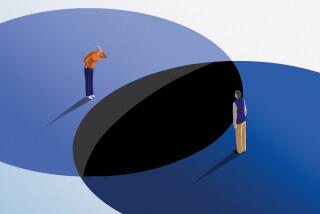Was âEinsteinâs Wifeâsâ contribution all relative?
They used to say that behind every great man was a great woman. In Albert Einsteinâs case, the two may have been working side by side.
Thatâs the premise of the intriguing, if inconclusive, documentary âEinsteinâs Wifeâ (9 p.m., KCET). The film, written and produced by Geraldine Hilton, sheds new light on the famous scientist and his brilliant first wife, Mileva Maric, for years merely a historical footnote, while exploring their possible collaboration in a number of landmark discoveries -- including the theory of relativity.
In 1986, more than 30 years after Einsteinâs death and 38 years after hers, a juicy stash of love letters from Einstein to Maric was unearthed in his archives, sparking a hot debate that continues in the science world: Was she his uncredited equal, or did she merely give the genius a measure of feedback?
Encouraged by her father, Maric zealously studied math and physics, later entering the Swiss Federal Institute of Technology and meeting classmate Einstein. So began a romance fueled, as the narrator says, âby coffee, music and physics.â
The passionate couple, known to each other as âJohnnieâ and âDollie,â worked together on a string of early scientific projects and settled into an unconventional domestic bliss until the stress of his rising fame helped rip them apart, but the extent of their professional collaboration remains a mystery.
Some scholars believe Einstein and Maric worked out E=MC2 as a team while they were visiting her family in Novi Sad, Hungary, and that her name was on the original documents detailing the formula before being lifted. âThere are about a dozen statements in Albert Einsteinâs own hand stating that they were collaborating on âour theory, our workâ on relative motion,â says one historian, Evan Harris Walker.
Others practically dismiss her as a âsounding boardâ for Einsteinâs ideas.
The film clearly leans toward the former view, although at this point the truth appears to be relative.
More to Read
Only good movies
Get the Indie Focus newsletter, Mark Olsen's weekly guide to the world of cinema.
You may occasionally receive promotional content from the Los Angeles Times.










